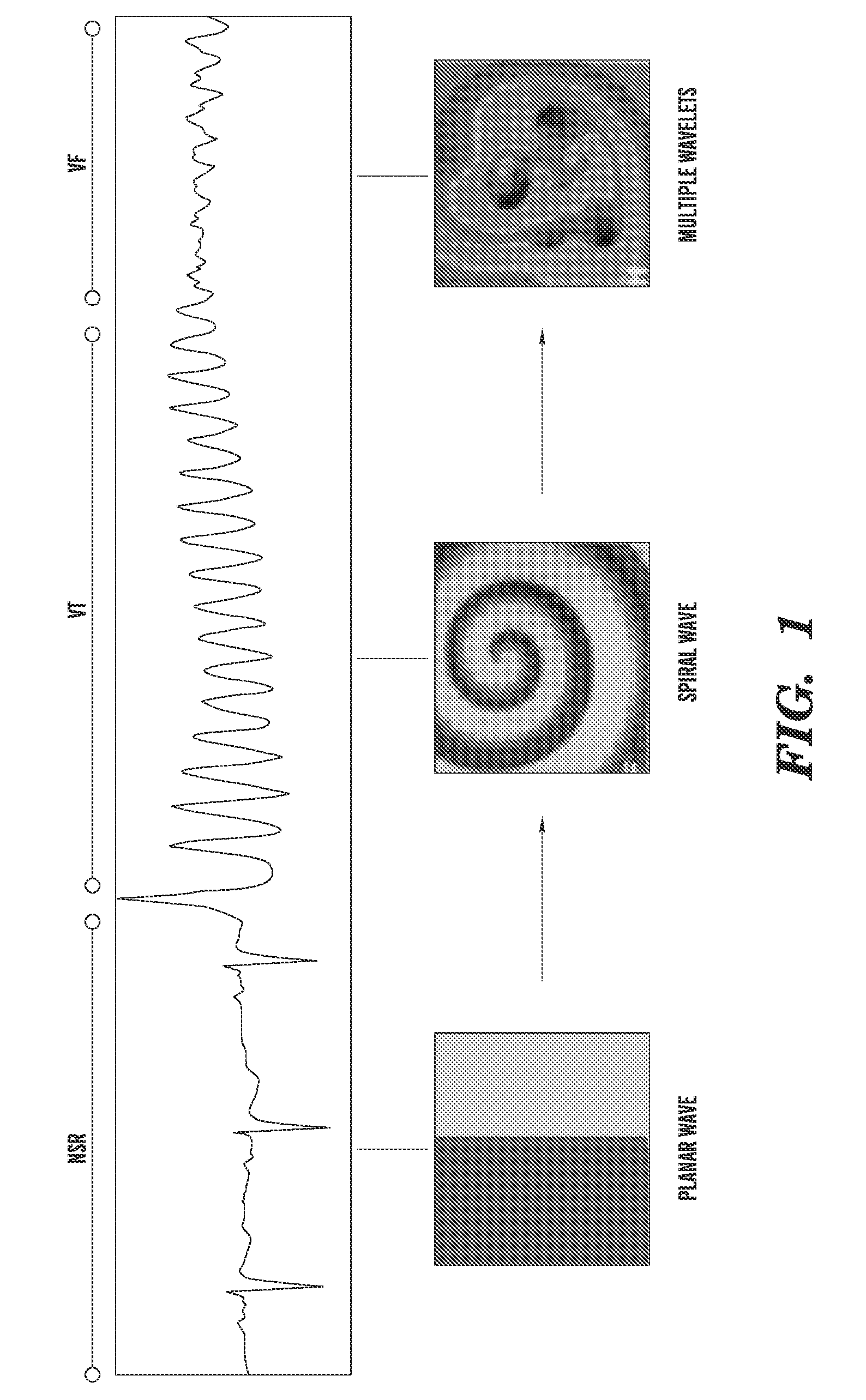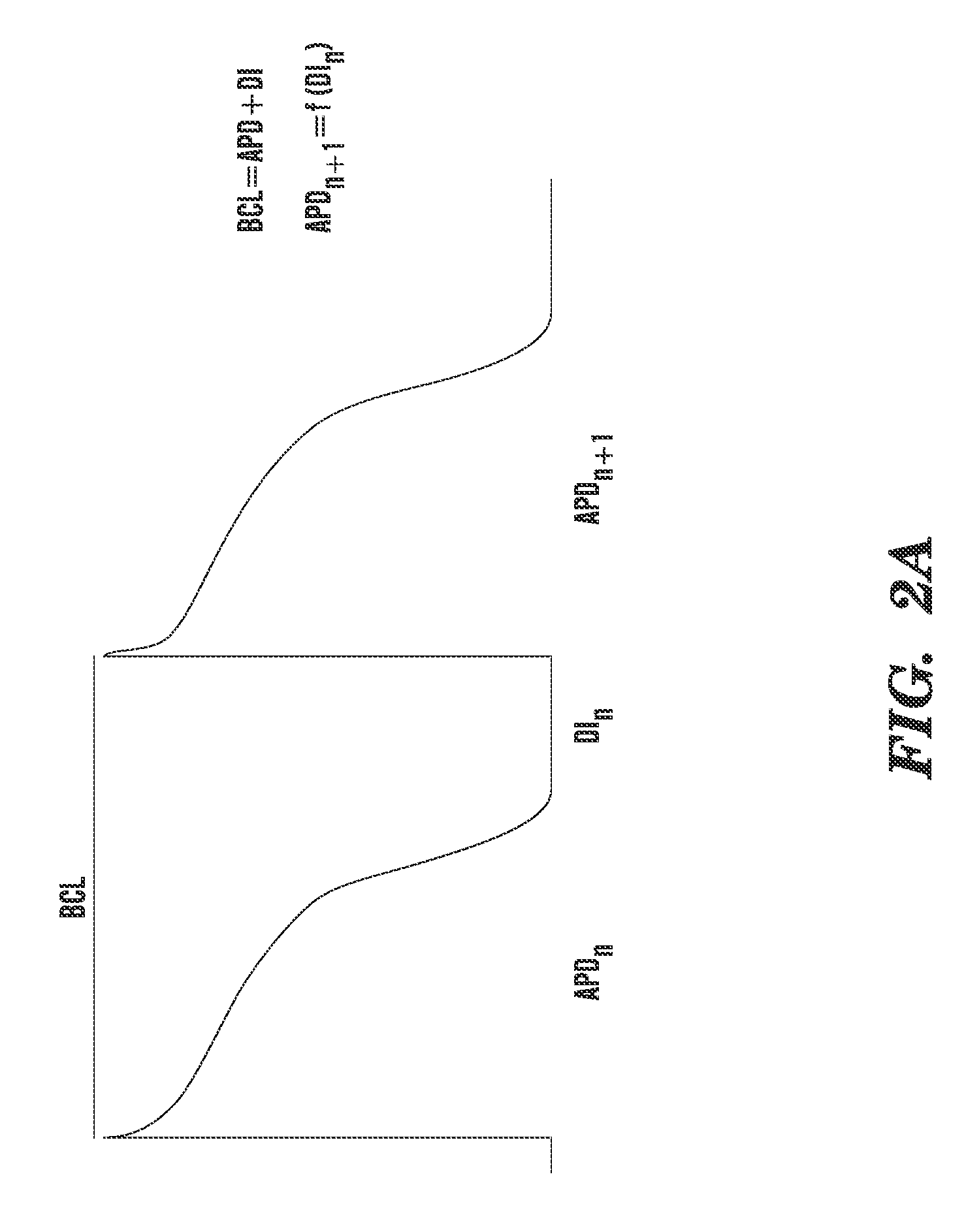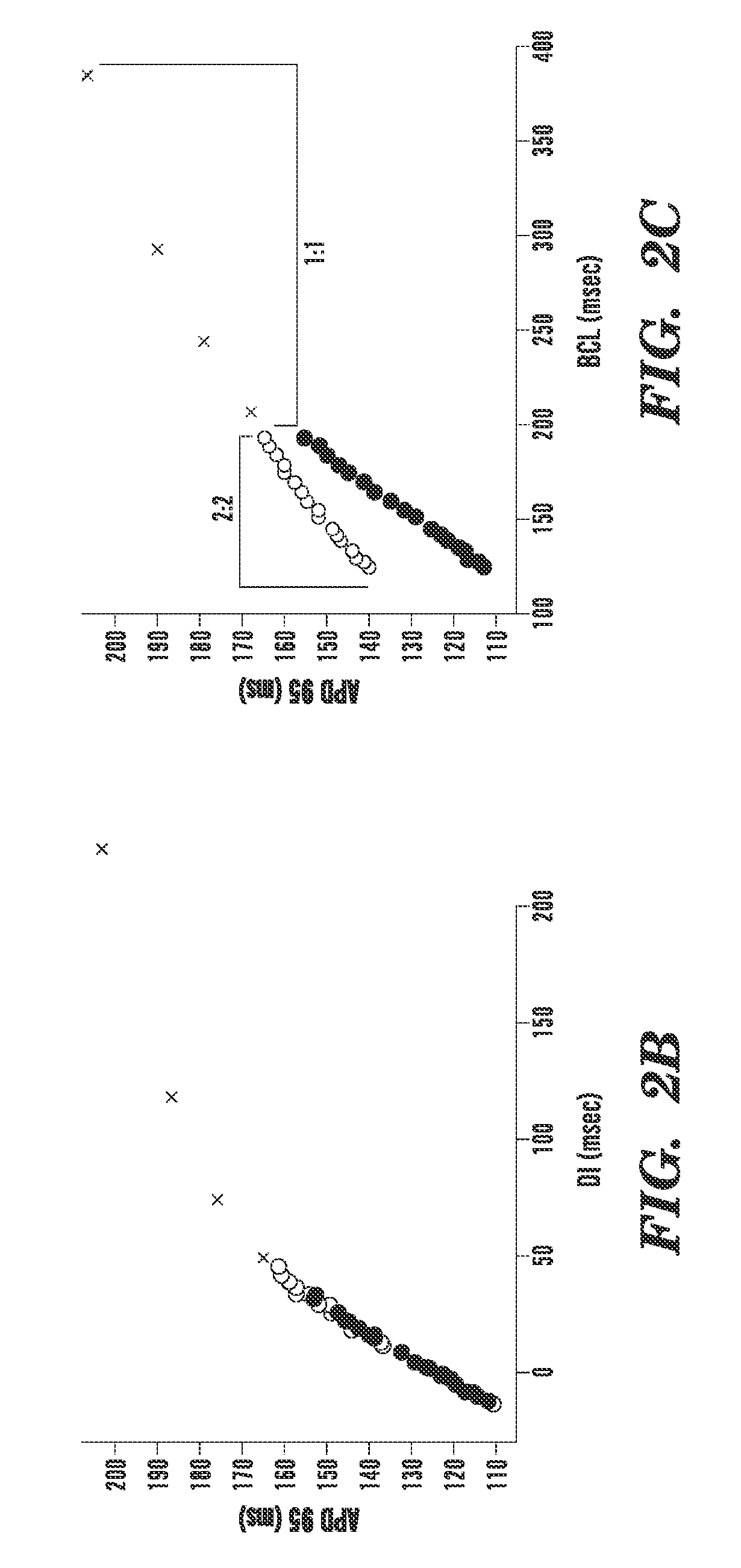Method of identifying strategies for treatment or prevention of ventricular fibrilation and ventricular tachycardia
a technology of ventricular fibrillation and strategy, applied in the field of identifying strategies for the treatment or prevention of ventricular fibrillation and ventricular tachycardia, can solve problems such as ventricular fibrillation in the test system, and achieve the effect of preventing ventricular fibrillation
- Summary
- Abstract
- Description
- Claims
- Application Information
AI Technical Summary
Benefits of technology
Problems solved by technology
Method used
Image
Examples
example 1
Methods of Examining the Dynamic Mechanism for Conduction Block in Heart Tissue
[0055]The mechanism for conduction block following the delivery of multiple premature stimuli using a one-dimensional computer model of a canine heart fiber is presented. The fiber was stimulated at one end at a cycle length near normal canine sinus rhythm (S′1=500 ms). After ten beats at S′1, four premature stimuli were delivered (S′2, S′3, S′4 and S′5). The coupling intervals between these premature intervals were varied and conduction of the resultant action potentials was observed (FIG. 4). For each combination of premature stimuli, one of three possible outcomes occurred: 1) the stimulus elicited an action potential that propagated down the entire fiber; 2) the stimulus did not produce an action potential (Type I block); 3) the stimulus elicited an action potential that blocked before reaching the end of the fiber (Type II block).
[0056]The first two cases would not be conducive to the development of ...
example 2
Coupled Maps Model
[0058]One aspect of the present invention is conducted using a coupled maps model of a one-dimensional cardiac fiber that has been described in detail elsewhere (Fox et al., “Period-Doubling Instability and Memory in Cardiac Tissue,”Phys Rev Lett 89:138101 (2002) and Fox et al, “Spatiotemporal Transition to Conduction Block in Canine Ventricle,”Circ Res. 90:289-96 (2002), which are hereby incorporated by reference in their entirety). Briefly, the model is based on the equation
In+1(xi)=Tn+1(xi)−Dn+1(xi) (1)
Tn+1 (xi) was the time interval between activations of site xi. It was determined by including the time delays caused by the propagation from the pacing site to site xi, which yielded
Tn+1(xi)=τ+∑j=0i-1ΔxVn+1(xj)-∑j=0i-1ΔxVn(xj).(2)
τ was the time interval between activations applied to the pacing site and Δx=0.1 was the length of a single cell (time units in ms and space units in mm). The conduction velocity Vn(xi) depended only on I through the velocity recovery ...
example 3
Characterization of Type II Conduction Block in Wild-Type Model
[0060]FIG. 6 shows a typical example of type II conduction block in the baseline model (hereafter called the wild type model). Despite the homogeneous state that existed at the end of the S′1 stimuli, dynamical heterogeneity developed following delivery of S′2, secondary to V restitution. Heterogeneity was manifest as a short-to-long gradient in I, which was magnified by subsequent premature stimuli until the action potential generated by the S′5 stimulus encountered a region where Imin and conduction failed.
[0061]FIG. 7 shows a histogram of type II conduction block at various S′2 and S′3 intervals generated from the wild type model. Note the presence of a large peak centered at an S′2 very close to the minimum value for conduction and at an S′3 approximately 50 ms longer than the minimum value for conduction. Surrounding the peak is a flat plateau region of five to ten blocks per bin that extends throughout the entire (...
PUM
| Property | Measurement | Unit |
|---|---|---|
| electrical | aaaaa | aaaaa |
| velocity restitution | aaaaa | aaaaa |
| action potential | aaaaa | aaaaa |
Abstract
Description
Claims
Application Information
 Login to View More
Login to View More - R&D
- Intellectual Property
- Life Sciences
- Materials
- Tech Scout
- Unparalleled Data Quality
- Higher Quality Content
- 60% Fewer Hallucinations
Browse by: Latest US Patents, China's latest patents, Technical Efficacy Thesaurus, Application Domain, Technology Topic, Popular Technical Reports.
© 2025 PatSnap. All rights reserved.Legal|Privacy policy|Modern Slavery Act Transparency Statement|Sitemap|About US| Contact US: help@patsnap.com



